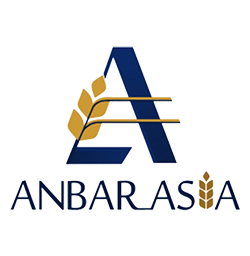The Middle East and West Asia continue to witness significant economic transformations, driven by initiatives aimed at enhancing industrial self-sufficiency and addressing long-standing fiscal and infrastructural challenges. Recent developments highlight opportunities and challenges in sectors ranging from pharmaceuticals to banking, with implications for regional and global trade dynamics.
Egypt's Advancements in Pharmaceutical Manufacturing
Egypt is making strides toward becoming a pharmaceutical manufacturing hub, capitalizing on the strategic location of the Suez Canal Economic Zone (SCZONE). The $120 million pharmaceutical industrial hub in the Sokhna Industrial Area signals a commitment to localizing medicine production. This project, supported by the collaboration between SCZONE Istithmar and Arab Pharmaceutical Materials Co., focuses on the production of active ingredients and essential chemicals for drug manufacturing. Such initiatives are pivotal in reducing dependency on imports and positioning Egypt as a competitive exporter in the global pharmaceutical market.
The expansion aligns with Egypt’s broader economic goals of fostering industrial self-reliance and attracting foreign investment. SCZONE's role in creating a favorable investment climate, combined with the government’s emphasis on public-private partnerships, underscores its intent to modernize the pharmaceutical sector. The new hub not only meets growing domestic demand but also enhances the region’s ability to address global health supply chain vulnerabilities.
Lebanon's Economic Recovery Amid Persistent Challenges
Lebanon's economic landscape remains precarious, despite the election of a new president, Joseph Aoun, who faces the daunting task of navigating the country through its most severe financial crisis since independence. Lebanon’s economy has been marked by hyperinflation, currency devaluation, and a crippled banking sector. The Lebanese lira's dramatic fall—now stabilized at 89,000 to the dollar compared to 1,500 before the crisis—has eroded purchasing power, driving poverty rates to unprecedented levels.
Aoun’s presidency offers a glimmer of hope, with Saudi Arabia and Gulf states signaling potential support. However, unlocking international aid hinges on implementing structural reforms. These include banking sector restructuring, transparency enhancement, and unification of exchange rates, as stipulated in the 2022 staff-level agreement with the International Monetary Fund (IMF). Successfully addressing these challenges could unlock $3 billion in IMF funding, a critical step toward restoring economic stability and international confidence.
The path to recovery is further complicated by the aftermath of conflicts with Israel and domestic unrest. Infrastructure rebuilding, estimated at $8 billion, remains a priority, while the public sector's paralysis exacerbates governance issues. Lebanon’s long-term recovery will depend on the government’s ability to implement reforms swiftly and effectively, balancing immediate relief with sustainable economic restructuring.
Strategic Implications for Regional and Global Trade
Both Egypt and Lebanon exemplify broader trends shaping Middle Eastern and West Asian markets. Egypt's investment in pharmaceuticals demonstrates a shift toward diversifying economies traditionally reliant on oil revenues. By leveraging its geographical and logistical advantages, Egypt positions itself as a critical node in the global supply chain for essential goods, contributing to regional economic integration.
Conversely, Lebanon's struggles highlight the vulnerabilities of economies heavily reliant on external funding and remittances. Its recovery strategy underscores the importance of financial transparency and institutional reform in attracting foreign investment and rebuilding economic resilience. For international stakeholders, Lebanon’s restructuring efforts could offer lucrative opportunities, particularly in infrastructure development and banking sector overhauls.
Conclusion
The Middle East and West Asia are at a crossroads, with countries like Egypt making significant progress in industrialization and self-reliance, while others like Lebanon grapple with deep-seated economic challenges. These contrasting trajectories underscore the region's complexity and its critical role in shaping global economic dynamics. For investors and policymakers, understanding these developments is essential to navigating the opportunities and risks inherent in these markets. Continued focus on structural reforms, regional cooperation, and strategic investment will be key to unlocking the region’s economic potential.






